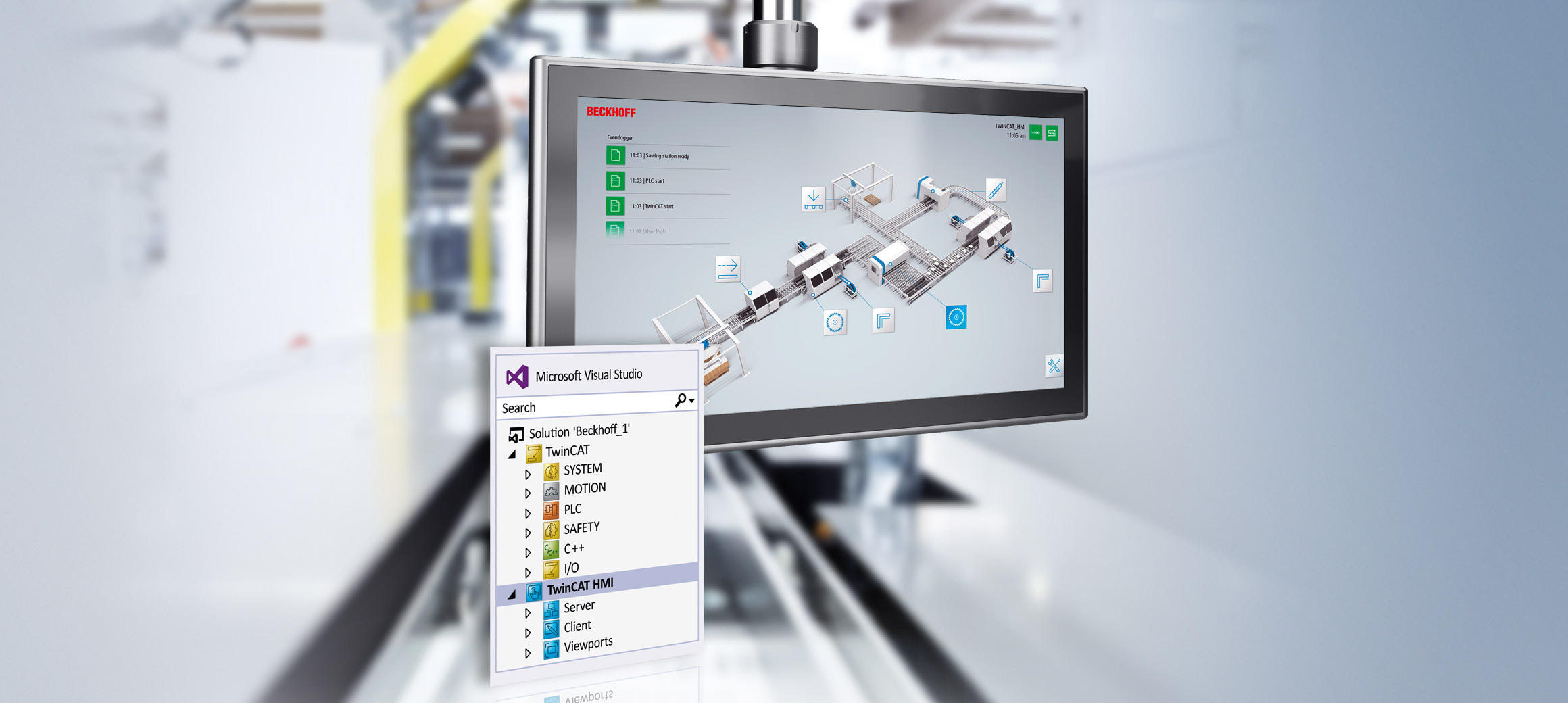

One of the reasons – perhaps the most important – for the success of PC-based control technology from Beckhoff is the constant focus on adopting standard IT for industrial purposes. What hardware is being used successfully in that area? How does standard IT actually make good software and what communication options are used? In addition to corresponding hardware developments, proven software trends in IT are also incorporated into PC-based control, so that TwinCAT users can take full advantage of the convergence between IT (information technologies) and OT (operational technologies).
As early as 1986, Beckhoff decided to use a PC as the hardware platform for machine control, because PC technology was already distinguished by a high degree of stability and performance. And while PC technology is still the most dynamically developing technology, it has also proven to be very reliable and stable, with architectural components that have remained essentially unchanged since 1986.
In addition to hardware suitable for industrial use, a control system also requires an operating system, just like a PC does in IT applications. In the early years, DOS was the primary operating system. Real-time support could be guaranteed with appropriate extensions developed by Beckhoff. This meant that, as early as 1986, PLC and motion control together with visualization could be executed on the same PC. With TwinCAT, a switch to the Windows operating systems took place in 1996 – and this has not changed until today. At the same time, the area of server operating systems was closely observed with developments revolving around Linux as well as FreeBSD. Beckhoff has again recognized an important trend here and now provides a corresponding operating system with TwinCAT Runtime in the form of TwinCAT/BSD to supplement Windows. In 2003, a successor to the Beckhoff Lightbus fieldbus technology was sought and found in the IT sector because a high degree of standardization made Ethernet a highly suitable alternative. Accordingly, Beckhoff combined existing fieldbus expertise with Ethernet and developed EtherCAT as a result.
Beckhoff has also consistently analyzed the engineering capabilities to discover which methods and toolboxes are used to create software in IT. The answer was simple: Microsoft Visual Studio®. The framework it provides, such as for source code versioning, UML and agile software development, would also be useful for creating automation software. Consequently, Visual Studio® was expanded to include I/O and axis configuration functions as well as PLC programming. Conversely, the C++ programming language was made accessible to TwinCAT users.
The advent of Industrie 4.0 and the interconnection of manufacturing, machine and cloud systems led to the next level of advanced automation. IT uses the cloud to store data, for global data analysis, and for remote programming. With the TwinCAT IoT products Beckhoff offered MQTT communication from the PLC to the cloud at an early stage – again adopting an IT standard, since all cloud service providers support MQTT. TwinCAT Analytics provides data analysis software that can be run in the cloud, and TwinCAT Cloud Engineering opens the possibility of browser-based programming and configuration.